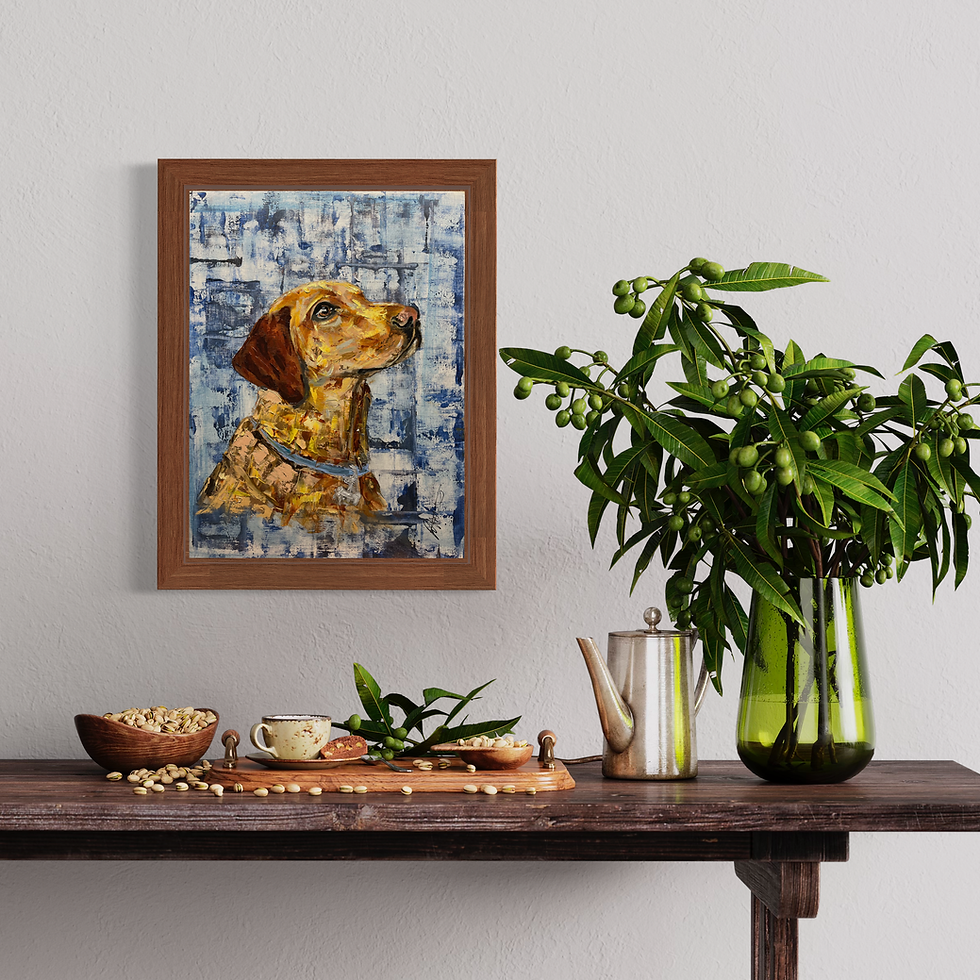The Top 10 UK Wildlife Animals Artists Love to Paint
- Richard J Hunt
- 7 days ago
- 4 min read
The United Kingdom is home to a stunning variety of wildlife, from the elusive red fox darting through foggy woodlands to majestic stags roaming the Scottish Highlands. For wildlife artists, these animals are a constant source of inspiration, providing endless opportunities for creative expression. In this post, we’ll explore the top 10 UK wildlife animals that artists love to paint, why they are so compelling, and tips for capturing them realistically on canvas.
This guide is perfect for artists, collectors, and wildlife enthusiasts looking to explore UK wildlife painting.
1. The Red Fox
Few animals capture the spirit of the British countryside like the red fox. Its fiery coat, bushy tail, and alert expression make it an irresistible subject for artists.
Why artists love it:
Striking fur coloration and bushy tail for texture and detail
Expressive eyes and dynamic poses allow storytelling

Tips for painting foxes:
Observe them in wildlife reserves or study high-quality photographs
Layer warm reds, oranges, and subtle browns for depth
Highlight the eyes to convey intelligence and alertness
2. The Red Deer
Red deer are iconic across the UK, especially in Scotland. Their majestic antlers and graceful stance make them ideal for landscape and wildlife compositions.
Why artists love it:
Provides a sense of grandeur and movement
Often painted within dramatic natural landscapes
Tips for painting red deer:
Start with the antlers; they define the silhouette
Use warm browns with soft highlights for realistic fur
Capture light falling on the body for a three-dimensional effect
3. The European Hare
The European hare embodies speed and alertness, making it perfect for dynamic compositions in meadows and fields.
Why artists love it:
Elegant, lean form allows expressive motion
Contrasts beautifully with open-field landscapes
Tips for painting hares:
Use gestural strokes to capture motion
Focus on long ears and limbs
Blend earthy tones for natural integration into the scene
4. The Tawny Owl

The tawny owl is a nocturnal wonder, perfect for atmospheric and moody paintings. Its round face and large eyes make it captivating to paint.
Why artists love it:
Opportunity to explore light and shadow
Evokes mystery in woodland or nighttime settings
Tips for painting tawny owls:
Highlight the eyes for a compelling focal point
Use muted browns and grays for feathers
Soft lighting enhances the nocturnal mood
Learn more about tawny owls.
5. The Hedgehog
Though small, hedgehogs have become a favorite subject for artists. Their spiny coats provide texture, while their expressive faces attract attention.
Why artists love it:
Charming for both realism and stylized illustration
Offers texture and detail challenges
Tips for painting hedgehogs:
Use fine, layered strokes to suggest spines
Emphasize round eyes for personality
Simple woodland or garden backgrounds work best
6. The Barn Owl
Barn owls are elegant and ethereal, with heart-shaped faces and white plumage that contrast beautifully with dark or twilight scenes.
Why artists love it:
Pale feathers create a striking focal point
Excellent for dynamic compositions in flight
Tips for painting barn owls:
Focus on the facial disk for expression
Blend whites, creams, and subtle grays for soft textures
Add atmospheric lighting for drama
7. The Badger
Badgers are nocturnal and bold, with distinctive black-and-white markings that make them visually striking.
Why artists love it:
High-contrast patterns make for dynamic compositions
Fun to paint emerging from burrows or in motion
Tips for painting badgers:
Use strong contrasts in fur
Place in woodland settings for context
Capture their curious nature for character
8. The Roe Deer
Smaller than red deer but graceful, roe deer are common in UK woodlands. Their delicate build makes them ideal for serene compositions.
Why artists love it:
Combines subtle movement with elegance
Blends naturally into landscapes for creative compositions
Tips for painting roe deer:
Focus on lean body and alert posture
Use warm browns with soft highlights
Dappled sunlight enhances realism
9. The Kingfisher
The kingfisher is a jewel of UK rivers and lakes. Its vibrant blue and orange plumage makes it a perfect subject for bold, colorful paintings.
Why artists love it:
Bright colors immediately draw attention
Depicting motion, like diving into water, adds energy
Tips for painting kingfishers:
Use saturated blues and oranges
Include reflections in water for realism
Quick, dynamic brushstrokes suggest motion
10. The Red Squirrel
Red squirrels are rare but beloved in the UK. Their bushy tails and expressive faces make them excellent for intimate wildlife portraits.
Why artists love it:
Small and charming, perfect for detailed work
Their rarity adds special value to artwork
Tips for painting red squirrels:
Focus on soft textures of the fur
Include natural woodland surroundings
Warm earthy tones highlight the coat
Why Painting UK Wildlife Matters
Painting UK wildlife connects artists and audiences to nature. These animals inspire awe, evoke emotion, and preserve the essence of British landscapes. Wildlife paintings also remind viewers of conservation and the importance of protecting habitats.
Internal link suggestion: “Explore more of my [UK Wildlife Art] collection.”
Tips for Aspiring Wildlife Artists
Observe nature firsthand: Spend time in forests, wildlife reserves, or gardens.
Use high-quality reference photos: Capture posture, movement, and lighting.
Practice textures: Fur, feathers, and foliage each require unique techniques.
Experiment with abstraction: Add subtle abstract elements for modern appeal.
Tell a story: Each painting should convey not just the animal but its environment and spirit.
Conclusion
From the fiery red fox to the elusive red squirrel, UK wildlife offers endless inspiration. Each animal presents unique challenges and rewards, giving artists a chance to develop both technical skill and expressive storytelling. Whether you’re a seasoned painter or just starting, painting these iconic creatures can enrich your portfolio and connect your audience to the beauty of British wildlife.
What’s your favorite UK animal to paint? Share your thoughts in the comments or tag me on Instagram—I’d love to see your creations come to life!


Comments